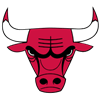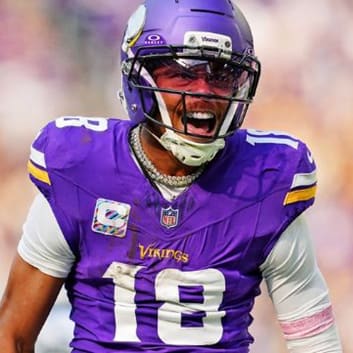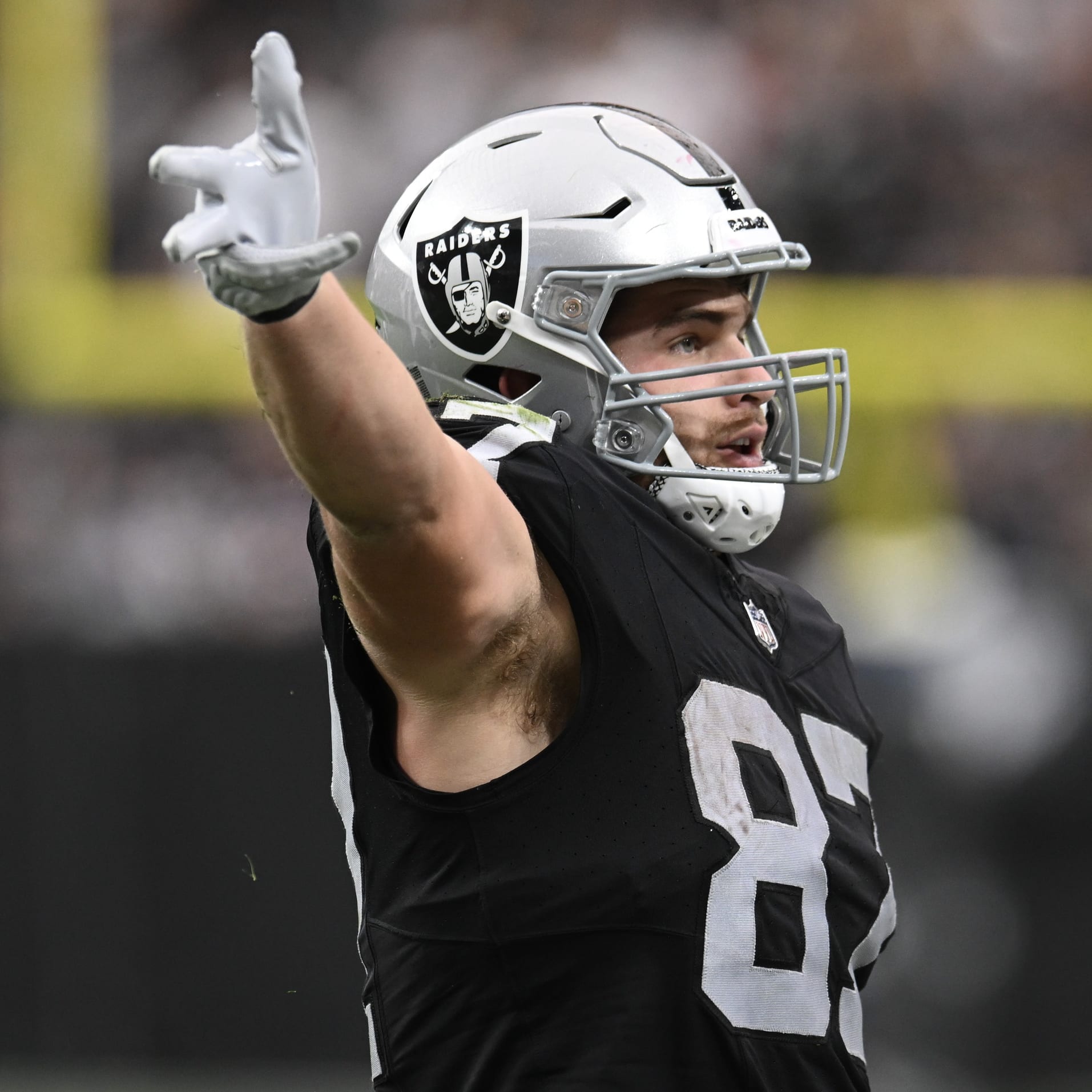This article identifies eight players whose price tags are favorable to the point that they carry no meaningful risk in Underdog Best Ball drafts. Any of these players could develop risk if their prices are higher than this hypothetical, but the price tags as listed more than account for the risk with player in question. I'm arguing that they're the kind of picks who are worth making the foundations of your best ball portfolio on Underdog.
Jonathan Taylor, RB, IND (9.9 Underdog ADP)
Like any player you'll want to keep your exposure to Taylor contained for injury possibility, but at the 10th pick or later he holds no meaningful risk from a performance or usage angle. Taylor projects to eventually enter the Dalvin Cook/Nick Chubb tier of pure running ability some point soon, and there's a chance he already got there in the second half of last season. Taylor's big frame gives him power and workhorse ability, his sub-4.4 speed gives him the homerun threat, and his reliable history of standout production with the Colts and Badgers shows that he supplements his elite tools with polished running back skills. Diversify as you always would to account for injury, but do not fade Taylor at this price otherwise.
Josh Jacobs, RB, LV (56.9 Underdog ADP)
I've seen Jacobs fall well into the sixth round recently, so we might see his ADP drop even further than 56.9 in upcoming days. If so, then Jacobs becomes even more of a foundational target. It's true that his upside is limited in the passing game – he hasn't been used in that capacity to this point and that's not going to get any better with Kenyan Drake in town – but going this late you only need Jacobs to provide you steady RB2 utility, and he can easily project for such production even after making plenty of room for Drake. Jacobs averaged 0.475 carries per snap through his first two years, meaning he only needs about 500 snaps to push for 240 carries. Jacobs played 616 snaps in only 15 games last year, so he can afford to see his snap count reduced and still stay among the league leaders in carry attempts. Devontae Booker and Jalen Richard played 428 snaps last year, so Jacobs could conservatively push for 280 carries on 600 snaps over 17 games and still leave about 500 snaps for Drake.
D.J. Chark, WR, JAC (71.6 Underdog ADP)
Chark didn't play poorly last year, the Jaguars quarterback play simply regressed. In hindsight it's pretty remarkable that Chark produced the way he did in 2019 while catching passes from Gardner Minshew. Mike Glennon was much worse, to be fair to Minshew, but Trevor Lawrence will make them both look laughable in comparison from Day 1. Beyond that, whatever skepticism someone might harbor toward Chark, they have to concede that he has a monopoly on the downfield work in this offense. At 6-foot-3, 199 pounds with a standout catch radius, Chark has a prototypical downfield frame to go with 4.34 speed and a 40-inch vertical. Marvin Jones can compete in the intermediate and Laviska Shenault will dominate the underneath looks, but Lawrence is a quarterback who will hurt teams downfield and he'll almost necessarily throw to Chark if or when he does. Two years removed from a 1,008-yard, eight-touchdown season in 15 games at 23 years old, Chark has clearly stood out despite poor surrounding conditions, and anyone who writes him off risks passing on a top-15 receiver if they do so. It's absurd to me that he's going later than players like Diontae Johnson (51.2 Underdog ADP), Brandon Aiyuk (54.3 Underdog ADP), DeVonta Smith (68.3 Underdog ADP) and Jerry Jeudy (70.4 Underdog ADP).
Leonard Fournette, RB, TB (116.5 Underdog ADP)
Fournette was definitely overrated as a prospect – his immense collegiate production was attributable to the LSU offensive line, in hindsight – yet on this Tampa Bay juggernaut squad the conditions are suddenly more like his LSU scenario than what he worked with in Jacksonville. The Tampa offensive line is strong, and safeties have to give up running room in order to vaguely account for Mike Evans and Chris Godwin. Fournette struggles to create space, but the space already exists for him in this scenario – all he has to do from there is be a huge fast guy, which he certainly is despite whatever his limitations might be otherwise. Crucially, he was Tampa's preferred passing down back all 2021 and improved both as a runner and pass catcher as the year went along. Tampa Bay's Super Bowl victory had a lot to do with Fournette's red-hot finish, and in the 11th round of best ball drafts it's worth buying shares on the chance that he maintains that late-season momentum. In best ball it doesn't matter so much if Fournette exchanges big games with Ronald Jones, and in the 11th round Fournette's current price tag ignores his upside potential in the event that he continues to play ahead of Jones like he did at the end of last year. It's puzzling that drafters would prefer players like Jones (106.8 Underdog ADP), Zack Moss (108.5 Underdog ADP) or Tony Pollard (113.3 Underdog ADP).
Parris Campbell, WR, IND (134.5 Underdog ADP)
Health permitting, Campbell will catch more passes this year than Michael Pittman (93.1 ADP). I don't feel the need to hedge on that. Campbell (6-0, 205) is a singular athlete (4.31 40, 40-inch vertical, 135-inch broad jump) whose skills can't be imitated by the other Colts wideouts. Pittman risks redundancy to T.Y. Hilton and Zach Pascal, both of whom safely outplayed him last year. Pittman failed to produce even though Campbell missed almost the entire season following a season-ending knee injury in Week 2. Campbell posted quietly strong numbers in Week 1, logging 61 snaps and drawing nine targets, catching six for 71 yards while otherwise taking a nine-yard carry.
David Johnson, RB, HOU (140.5 Underdog ADP)
Johnson of course carries risk – his injury history in recent years is consistently troubling – but his current ADP acts as if he both has no role and no talent, when the opposite is clearly the case, injury history or not. There is no meaningful risk to drafting Johnson this late, later than obviously riskier players with less upside, players like Gus Edwards (123.9 Underdog ADP), Kenyan Drake (130.4 Underdog ADP), and Latavius Murray (134.8 Underdog ADP). Some drafters are even taking Nyheim Hines (143.7 Underdog ADP) or Jamaal Williams (144.5 Underdog ADP) over Johnson. It's madness!
Jonnu Smith, TE, NE (153.4 Underdog ADP)
There was some consternation around the fact that Kyle Pitts' rookie contract paid him the second-most guaranteed money ($32.910M, according to OverTheCap.com) among NFL tight ends, trailing only George Kittle ($40M) and more than unchallenged TE1 Travis Kelce ($27M). You know who else was paid more guaranteed money than Kelce? That's right, Jonnu's contract ranks just behind Pitts and safely ahead of Kelce at $31.25 million guaranteed. Fellow esteemed free agent tight end signing and new teammate Hunter Henry has a nice chunk of guaranteed money himself ($25M, fifth), but still less than Smith to the point that it basically means Henry's contract is one year shorter than Smith's (both players will be candidates for cuts or restructures before the final years of their contracts).
The contract difference is one reason to believe that the Patriots mean to prioritize Smith's usage. They're paying him more, so it stands to reason that they'll want more production out of him than Henry. The second reason is that between the two, Henry is the one who most conventionally projects for inline snaps, which tend to be more thankless and collision-prone than the Move/H-back functions that Smith's traits trend toward. Smith has a history of thriving in such a role at Florida International in college, and it's that version of Smith that fantasy drafters should look toward as an example rather than his usage in Tennessee.
Van Jefferson, WR, LAR (187.5 Underdog ADP)
You don't need to believe Jefferson is especially good (I don't) to see that he's still a strong fantasy target at this minuscule price. If you believe that Matthew Stafford is a substantial upgrade over Jared Goff (I do) then almost categorically the WR3 in that offense will have value. There's some belief that Jefferson isn't the WR3 for the Rams, but I think that's a misunderstanding. The wide receivers in this offense are split into two subtypes – the base receivers (Robert Woods, Cooper Kupp) and the big-play specialists (DeSean Jackson and Tutu Atwell). Jefferson's current price supposes that his role is in a split with Jackson and Atwell for the third spot behind Woods and Kupp, but it's more likely that Jefferson profiles for the same tasks as Woods and Kupp while Jackson and Atwell fight over a comparatively small share of snaps due to their light frames.
Josh Reynolds ran in that third spot behind Woods and Kupp last year, and he logged 803 snaps and 81 targets in that role. The additions of Jackson and Atwell mean the Reynolds role probably won't entail 803 snaps again, but Jefferson only needs something like a 650-snap baseline to pay off at his current price, and in the event of an injury to Woods or Kupp his value would skyrocket. Jefferson already proved this when he replaced Cooper Kupp in the starting lineup in the Rams' playoff loss to Green Bay, where Jefferson caught six of seven targets for 46 yards and a touchdown. This is a solid floor and high ceiling for the 16th round of best ball drafts.










































